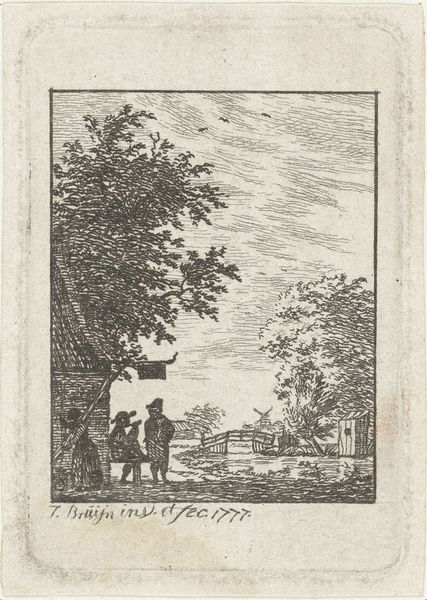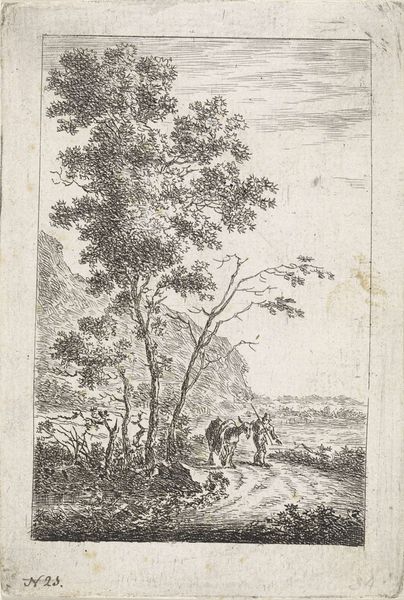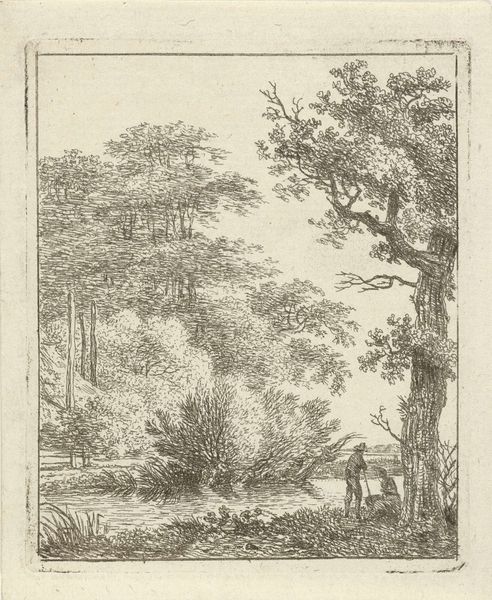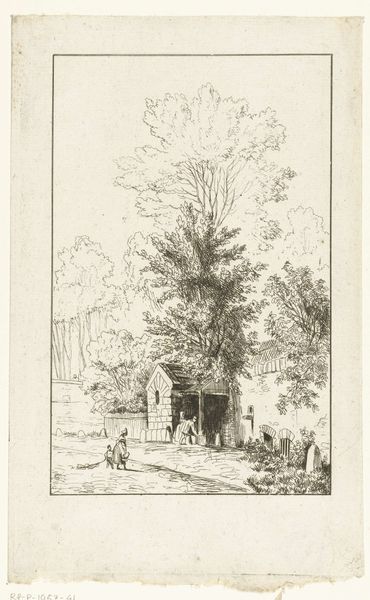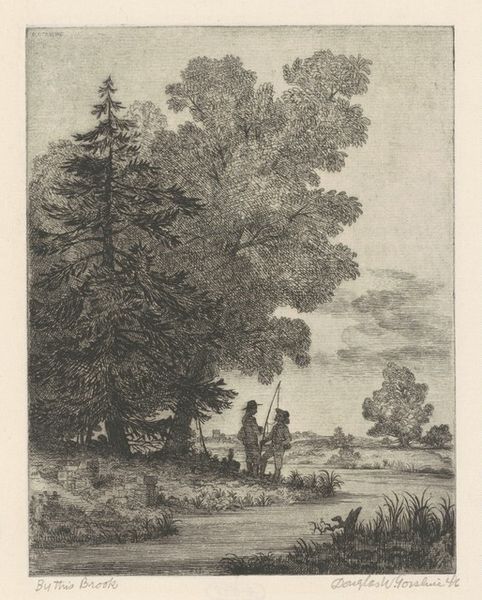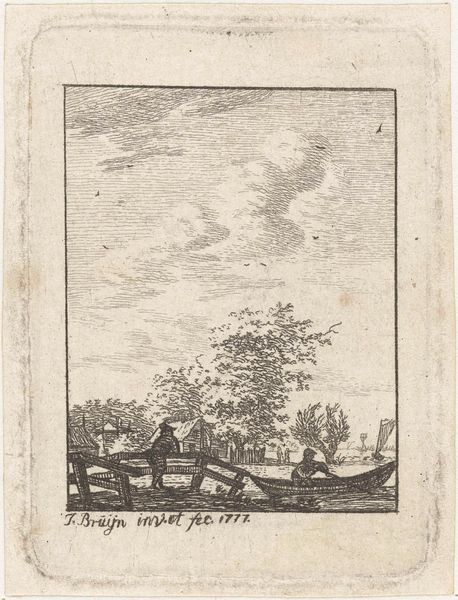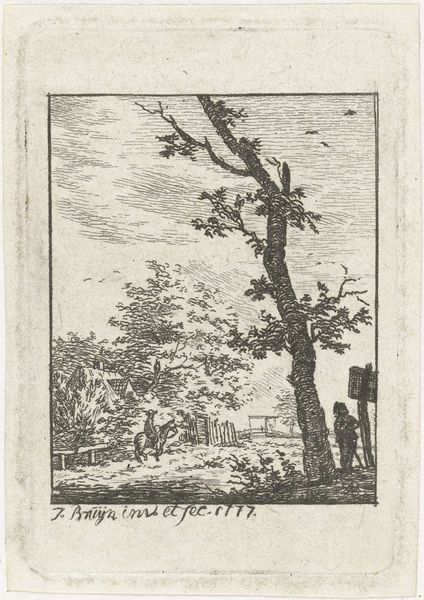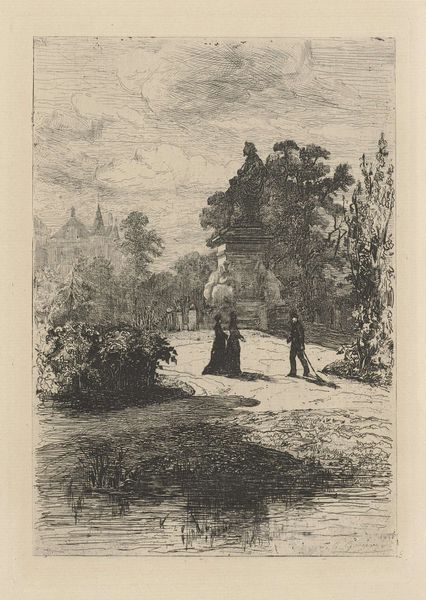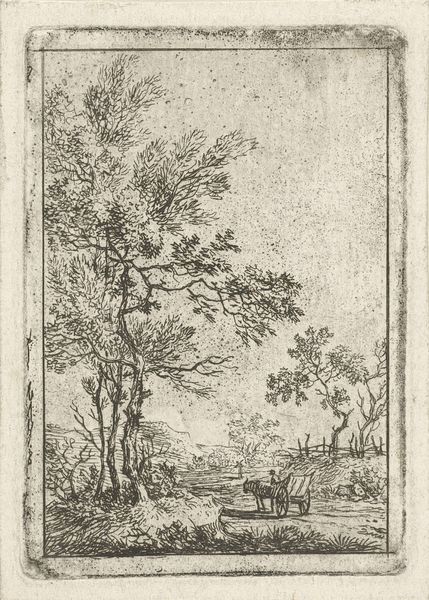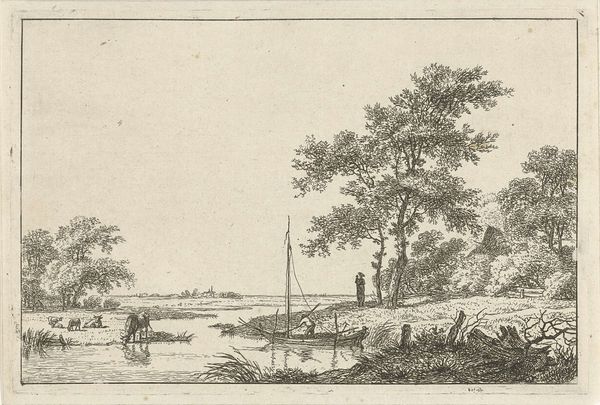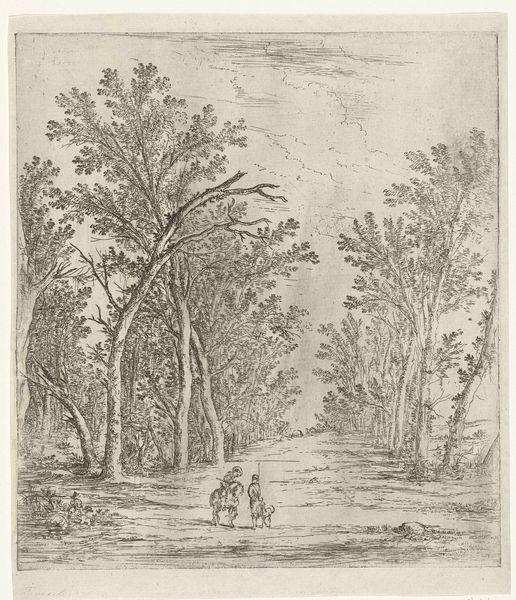
drawing, print, etching
#
drawing
# print
#
etching
#
landscape
#
etching
#
park
#
cityscape
#
genre-painting
Dimensions: height 193 mm, width 162 mm
Copyright: Rijks Museum: Open Domain
Joseph Hartogensis created this print of figures in a park using etching, likely sometime in the mid-19th century. Etching is an indirect intaglio process, where the artist covers a metal plate with a waxy, acid-resistant ground. By scratching through this layer, they expose the metal underneath. When immersed in acid, the exposed lines are bitten, creating recessed areas in the plate. Ink is then applied to the entire surface, and after wiping, it remains only in the etched lines. The plate is pressed against paper, transferring the image. The character of the etched line has a distinctive quality, different to that of an engraving, communicating a sense of spontaneity. This was particularly well suited to depicting leisure activities, and the rising middle classes in a modernizing society. We can see that etching, a technique in which skilled labor is mediated through chemistry, was perfectly matched to this subject matter. The result is a park scene brought to life with a controlled freedom. By considering the materiality and process of etching, we can see how Hartogensis’ work participates in larger stories of industrialization, labor, and artistic expression.
Comments
No comments
Be the first to comment and join the conversation on the ultimate creative platform.
